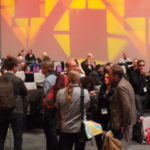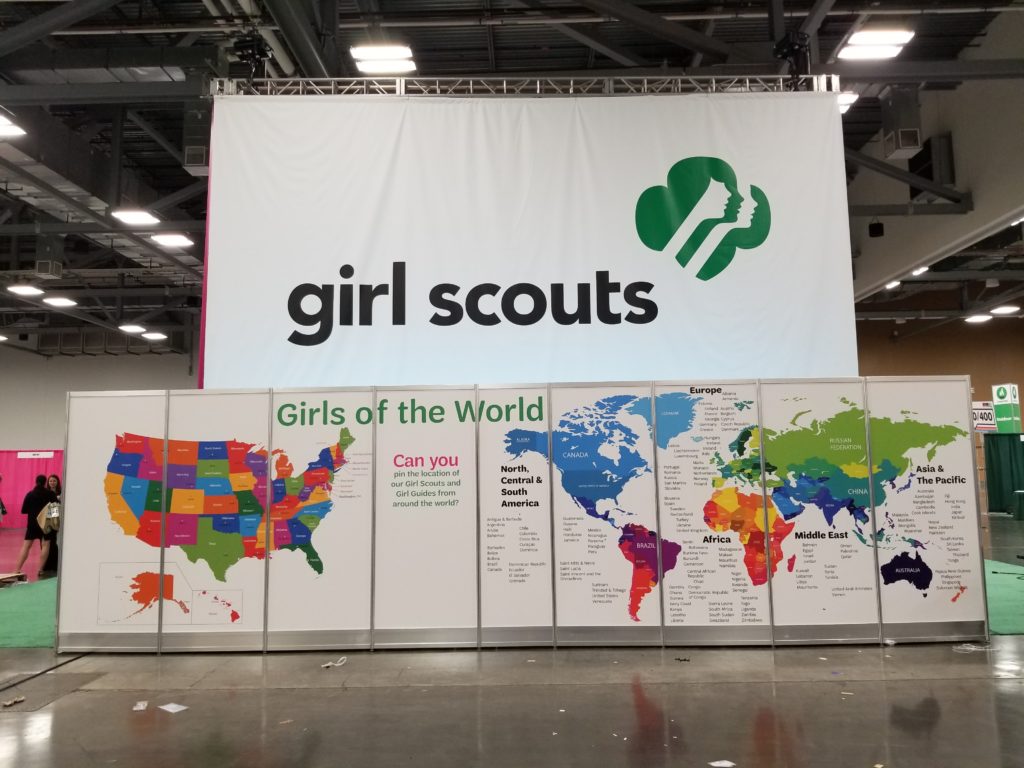
If the Girl Scouts of the USA had a badge for Convention Reinvention, Phelps R. Hope, CMP, would have earned it — by overseeing the overhaul of the the 105-year-old institution’s national triennial event.
Held last year at the Greater Columbus Convention Center during the first week in October, the Girl Scouts of the USA (GSUSA) national convention pulled off a number of firsts for the organization. The new event — orchestrated by Hope, senior vice president, meetings and expositions, for association-management firm Kellen Company — was several years in the making, and part of GSUSA’s strategy to “retool how they position themselves,” Hope said, “with members of the future.”
Like many traditional associations GSUSA was struggling to remain relevant to younger, tech-savvy audiences. “Young girls today don’t need to join a troop and put on a uniform and earn badges to get a sense of self-worth,” Hope said. “They’re connecting with friends online and getting those needs met through the world of social media.”
Because GSUSA was “steeped in its own history and tradition,” he said, its leaders recognized the benefit of seeking outside consultative help to rethink its national convention to appeal to a new generation of girls. Kellen came on board in 2013 with Hope as the point person, helping the organization execute on the plan that was already in place for its 2014 event in Salt Lake City. After the event concluded, Hope met with GSUSA’s vice president of national meetings, Valerie Trudeau, and several days and many flip-chart pages later, he said, the two “redrew what this convention could be.” Here’s a look at what they mapped out.
‘CHOP IT IN HALF’
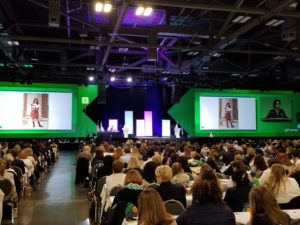
Five days is long for a convention, Hope said, but that was the number of days GSUSA had booked at the Greater Columbus Convention Center before Kellen was hired. The solution? “Chop it in half,” Hope said. “Instead of five days of the Girl Scouts inwardly focused,” Hope and Trudeau decided to compress everything that makes Girl Scouts Girl Scouts — bylaws, traditions, badges, pledges, promises, flag ceremonies — into a two-and-a-half-day council meeting.
They planned an all-new Girl Scout-powered event for the remaining two-and-a-half days, one that was open to all girls and which could potentially expand its membership base of 1.8 million girls. That in turn, they figured, would helped to attract additional and new-to-GSUSA exhibitors and sponsors. That plan worked: The usual 60-80 exhibitors grew to 145 booths.
And the pattern of the new event — from Friday through Sunday — maximized attendance, since girls didn’t have to take time off from school to participate. About 30 percent of attendees at the council event ended up staying on for the second half, which swelled from 5,000 participants to more than 9,000 (more about that later).
The next order of business was to brand the new open-to-all-girls event. A main focus for GSUSA’s new CEO, Sylvia Acevedo, is to inspire girls become future leaders, underpinned by a strong foundation in STEM (science, technology, engineering, and mathematics). In fact, with Acevedo — a former NASA rocket scientist and one of the first Latinas to complete a graduate degree in engineering at Stanford — at the helm, GSUSA released 23 new badges in STEM and the outdoors just last year.
This emphasis on leadership and STEM “rippled throughout” all of the event’s design, Hope said, from speaker selection to marketing messages, and factored into the naming of the event itself: G.I.R.L., an acronym for Go-getter, Innovator, Risk-taker, and Leader. Trudeau put together a “G-Team” — 21 Girl Scouts from across the country overseen by GSUSA staff members in their 20s — to develop content, and Hope and his team at Kellen provided advice on speakers and their content.
‘AN ORCHESTRATED EVENT’
Splitting the event in two made a lot of sense on paper, but “this is where it really logistically became an incredible exercise,” Hope said. The Girl Scout convention had historically attracted 5,000 attendees, and nearly double that was planned for the G.I.R.L. event. Since the Columbus Convention Center had been booked with the traditional convention in mind, all that was available was Hall A and B for the general session, connected by an air wall. “To do the 9,000-person event, we needed both A and B,” Hope said, but the two halls together would be too large for the first half of the event.
So Hope and his team had to build out the combined Hall A and B first. “Then we cut it in half, and rebranded the Hall A portion,” he said, to be GSUSA-themed. “So in Hall A, we had the national council session operating for two-and-a-half days at the same time we’re rehearsing G.I.R.L. in Hall B.” Working with AV company ON Services, Hope and his team used a d3 media server, to broadcast to multiple screens from multiple video sources to both halls. “It looked,” Hope said, “like NASA backstage. I’d never seen anything like it.”
A crew of 215 people helped run the entire five-day event, in addition to subcontractors and freelancers and the AV team. And every single person was needed, he said, particularly during the four hours in which they had to turn one conference into the next.
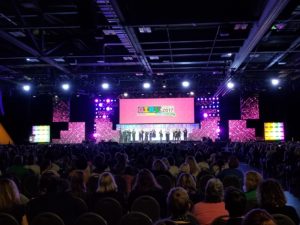 In the space of that short turnover, the air wall was opened, the room reset, the stage reconnected, the dance floor put on top of the stage, LEDS put in place, and the video walls — four 20’ X 60’ screens plus a 45-foot-wide screen in the middle “with LED interspersed for real eye-catching fun,” Hope said — were set up. Plus truss, cabling, electrical, were reconnected. “It was such an orchestrated event,” he said. “Nobody involved in this had ever done anything at this level before.”
In the space of that short turnover, the air wall was opened, the room reset, the stage reconnected, the dance floor put on top of the stage, LEDS put in place, and the video walls — four 20’ X 60’ screens plus a 45-foot-wide screen in the middle “with LED interspersed for real eye-catching fun,” Hope said — were set up. Plus truss, cabling, electrical, were reconnected. “It was such an orchestrated event,” he said. “Nobody involved in this had ever done anything at this level before.”
HIGH-PRODUCTION VALUES
For the G.I.R.L. main stage, Hope drew inspiration from both the small screen and live-theater productions. The large screens on the stage played video — “quick hits, very Nickelodeon, fast, fun,” Hope said, with “messaging points delivered in snackable bites.”
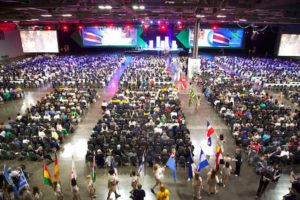
And taking a page from Broadway, the main stage was lit in the middle, “and it goes dark, and then Stage Left shines up, and there’s a speaker, and it goes dark, and then Stage Right comes up — it’s basically three stages connected by a bridge, and we’re keeping your attention,” he said. “You’re not just staring at the same stage and the same screen, but we’re adding variety. By mixing up the physical, making sure the content has high-entertainment value, then we can overcome the fact that we’re in a traditional convention environment, and keep that interest level very high for the audience of 12-to-20-year-olds.”
HANDS-ON
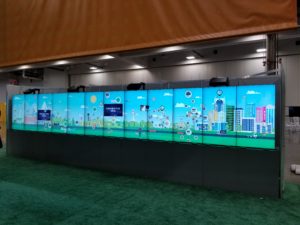
The traditional exhibit hall was also reimagined with a new generation in mind, Hope said, because they’re “not really psyched about walking up and down aisles of 10 X 10 booths. They want to touch stuff, they want to experiment, they want to have fun with it, get involved with it.” So on the show floor — in addition to such experiential activities as scuba diving in an on-the-show-floor pool — a brand-new touchscreen technology called MultiTaction was introduced for the first time in the United States.
This touchscreen display of 12 50” X 32” LCD plasma screens oriented vertically in portrait style were seamlessly attached to create a 30-foot video wall that was “stitched together, software-wise,” Hope said. Attendees could touch the screens and drill down several layers for more interactive content and animated elements could be dragged across screens. To prevent the sound from bleeding from one display to the next, small directional speakers were installed over the top of each monitor.
“Girls, adults — everybody was playing with this thing,” Hope said. “We put it on the town square in the middle of the exhibit hall, opposite a small stage where sing-alongs, gatherings, and entertainment was taking place.” The display, underwritten by AT&T, helped deliver on its brand messaging, as well as the strategic messaging for the convention and GSUSA as a whole.
G.I.R.L. 2017 managed to balance entertainment in the exhibit hall and throughout the program with weighty content like cyberbullying and human trafficking. It was “extremely bold and very current,” Hope said. “That was the whole point of it — how do we get hip and cool without saying we’re hip and cool?”
G.I.R.L. POWER
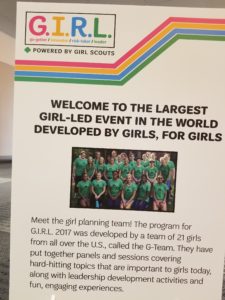
The speaker lineup — all women and girls — at G.I.R.L. 2017 was the opposite of the all-male speakers who dominate many conference programs to this day. According to girlscouts.org, the variety of speakers featured “have pursued their passions, created innovative solutions to problems, built the courage to navigate through obstacles, and developed the resources to lead in their everyday lives.”
On the roster: Barbara Pierce Bush; Chelsea Clinton; Olympic gymnast Gabby Douglas; 17-year-old singer/songwriter Caly Bevier; 12-year-old Marley Dias, founder of #1000BlackGirlBooks, an international movement to collect and donate children’s books that feature black girls as the lead character; 9-year-old Angelica Hale who competed on TV’s “America’s Got Talent”; 19-year-old Gabby Frost, founder and CEO of Buddy Project, which aims to prevent suicide and raise mental-health awareness; and model Katie Wilcox, author of Healthy Is the New Skinny and CEO of Natural Model Management, which challenges the media’s notion of the beauty ideal.
See a video of Hope at G.I.R.L. explaining highlights of the brand-newevent, for which he has been nominated as PCMA’s Event Designer of the Year




